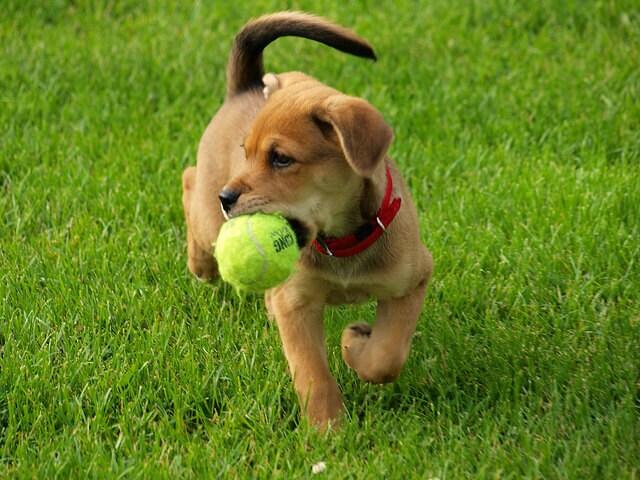
-
Find the right food for your petTake this quiz to see which food may be the best for your furry friend.Find the right food for your petTake this quiz to see which food may be the best for your furry friend.Health CategoryFeatured products
 Adult 7+ Healthy Cuisine Roasted Chicken, Carrots & Spinach Stew Dog Food
Adult 7+ Healthy Cuisine Roasted Chicken, Carrots & Spinach Stew Dog FoodDelicious roasted chicken paired with tender vegetables in a succulent stew
Shop Now Perfect Weight & Joint Support Large Breed Chicken & Brown Rice Recipe Dog Food
Perfect Weight & Joint Support Large Breed Chicken & Brown Rice Recipe Dog FoodThis weight management and mobility support dog food was created with Hill’s unique understanding of the biology of overweight dogs
Shop Now Adult Salmon & Brown Rice Recipe Dog Food
Adult Salmon & Brown Rice Recipe Dog FoodSupports lean muscle and beautiful coat for adult dogs
Shop NowFeatured products Adult Perfect Weight with Chicken Cat Food
Adult Perfect Weight with Chicken Cat FoodBreakthrough nutrition for your cat’s healthy weight maintenance and long-lasting weight support
Shop Now Adult Urinary Hairball Control Tender Chicken Dinner Cat Food
Adult Urinary Hairball Control Tender Chicken Dinner Cat FoodPrecisely balanced nutrition to support urinary health from kidney to bladder. With natural fibre technology to help reduce hairballs.
Shop Now Adult Salmon & Brown Rice Recipe Cat Food
Adult Salmon & Brown Rice Recipe Cat FoodSupports lean muscle and beautiful fur for adult cats
Shop Now -
DogCat
- Cat Tips & Articles
-
Health Category
- Weight
- Skin & Food Sensitivities
- Urinary
- Digestive
- Kidney
- Dental
- Serious Illness
-
Life Stage
- Kitten Nutrition
- Adult Nutrition
Featured articles Pet Food Storage Tips
Pet Food Storage TipsWhere you store your cat and dog food can make a big difference in the quality and freshness once it is opened. Here are some common questions and recommendations for optimal storage for all of Hill’s dry and canned cat and dog food.
Read More Water
WaterWater is the most important nutrient of all and essential for life. Animals can lose almost all their fat and half their protein and still survive, but if they lose 15% of their water, it will mean death.
Read More The Right Diet For Your Pet
The Right Diet For Your PetLearn what to look for in healthy pet food & nutrition, including ingredients, quality of the manufacturer, your pet's age, and any special needs they have.
Read More -


If you're a pet parent looking for interactive playtime with your pup, teaching your dog to fetch is a terrific way for the two of you to bond and get some exercise.
However, playing fetch doesn't come naturally to some dogs. You may know already if you throw a stick for your dog, and he happily chases after it but doesn't bring it back.
Fetching, whether with a ball, flying disc, stick or shoe is not an instinctive behavior in dogs, no matter what the breed of dog (even some retrievers won't retrieve). Because of this, many dogs simply aren't interested in returning objects.
"Some dogs enjoy chasing and being chased; for these dogs, the best part of the game is when a human runs after them to get the ball," explains Vetstreet. The reward for them is catching the object, not returning it, and they'll wait for their pet parent to do the fetching.
Or, your dog may not even chase the object that you're throwing, whether he's asserting his independent spirit or simply enjoying watching the ball soar through the air, then looking at you as if to say, "What's your next trick?"

He does look pretty cute sitting next to his ball with a big doggy smile on his face, but think of how much more fun you and your furry companion can have if he learns how to fetch!
Fetch Objects
Animals become attached to their toys, and using a favorite dog toy for retrieval training is a great way to get (and keep) your pup's interest. Your dog may love his stuffed bunny, but rubber balls may be a better and safer choice because they are sturdier and won't shred like a plush toy.
It may take a few tries, but once you find a ball your dog gets really excited about, toss it around to familiarize and engage him. You can start by throwing the toy just a few feet away. After he chases and catches the toy, encourage him to return to you and drop the ball.


Tasty Tips
Rewards
One of the first things you need to decide is what his prize will be for retrieving the ball. An effective way to reward your canine pal for his good behavior is to use training treats or kibbles of dog food. Start training with rewarding him each time, but slowly, as he starts to get the hang of things, do it less so he does not think that the point of this play is to get a treat. Once your dog learns the behavior, you can move to "lesser rewards" (such as praise and extra praise) instead of food.
At all stages of retrieval training, make sure to give him verbal praise to encourage the repeat behavior. When he returns the object, do not immediately reach for it, but rather praise him, pet him and possibly even give him a treat. As he learns to drop the object on his own in anticipation of you throwing it again, he's starting to understand what the game of fetch is all about. Don't praise him if he doesn't return the ball, otherwise you're not reinforcing the behavior that you want him to do.
Commands
If your dog is already familiar with basic commands, such as "sit" and "stay," you're off to a good start. Teaching a dog to fetch includes other commands, such as "drop it," which is particularly helpful if he likes to hold onto the ball in his mouth when he returns it to you. This can be a completely separate training session on its own.
At first you may have to barter with your dog by offering something like a treat in exchange for the ball, but overtime he should start to understand the drop command. This can come in handy if he ever decides to eat something that he shouldn't, so you don't have to reach into his mouth to pull it out.
Safety
Dogs playing fetch is as old as time, but it's also import to ensure that you keep him safe while playing. Make sure your dog is very well-trained or in an enclosed area to ensure that he will not run away. If you're playing at a dog park, make sure that there is not competition with other dogs that could result in a fight over the toy. Finally, always remember to throw the toy away from danger — never toward traffic or heavy areas of congestion. Avoid throwing it near water if your dog is not a strong swimmer, or has no interest in going into the water to fetch.
With patience and persistence, teaching a dog to fetch is a rewarding lesson for you and your pup. It's a great way to bond and the two of you can spend countless hours playing. But what if he just doesn't like playing fetch? There is still an abundance of other fun games you and your little guy can play together.
Who knows, maybe all this time he was just teaching you how to fetch and you didn't realize it.


Christine O'Brien is a writer, mom, and long-time cat parent whose two Russian Blues rule the house. Her work also appears in Care.com, What to Expect, and Fit Pregnancy, where she writes about pets, pregnancy, and family life. Find and follow her on Instagram and Twitter @brovelliobrien.
Related products

This weight management and mobility support dog food was created with Hill’s unique understanding of the biology of overweight dogs

Supports lean muscle and beautiful coat for adult dogs

Delicious roasted chicken paired with tender vegetables in a succulent stew

Gentle on stomachs while nourishing skin & supporting development in growing puppies
Related articles

Though it may seem like your four-legged friend loves nothing more than to nap on the couch, dogs need regular exercise to stay healthy just like people do.

Selecting the right food for your puppy is a key to quality nutrition and a long, healthy life., Learn more about how to select the right puppy food.

Learn what you can feed your pregnant or nursing dog to keep her and her new pups healthy.

A dog with a sensitive stomach has special needs. Learn more about sensitive stomach symptoms in your dog, what you can do to help sooth your pet’s insides and get recommendations on sensitive stomach dog food.

Put your dog on a diet without them knowing
Our low calorie formula helps you control your dog's weight. It's packed with high-quality protein for building lean muscles, and made with purposeful ingredients for a flavorful, nutritious meal. Clinically proven antioxidants, Vitamin C+E, help promote a healthy immune system.
Put your dog on a diet without them knowing
Our low calorie formula helps you control your dog's weight. It's packed with high-quality protein for building lean muscles, and made with purposeful ingredients for a flavorful, nutritious meal. Clinically proven antioxidants, Vitamin C+E, help promote a healthy immune system.

